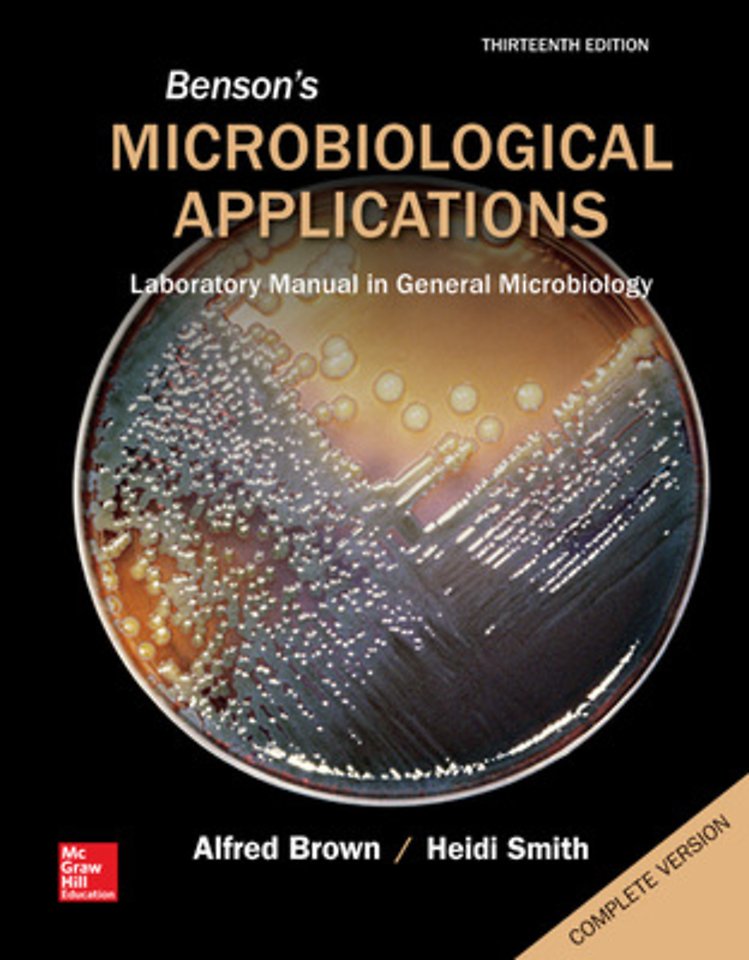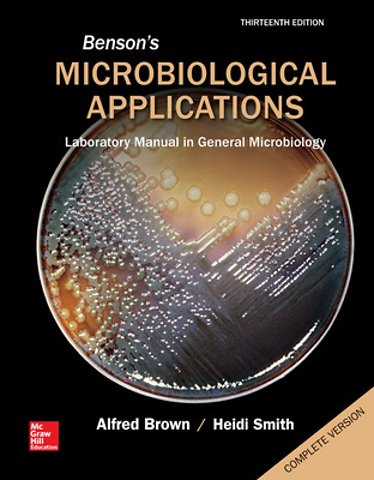<h2>Part 1 Microscopy<h3>1 Brightfield Microscopy<h3>2 Darkfield Microscopy<h3>3 Phase-Contrast Microscopy<h3>4 Fluorescence Microscopy<h3>5 Microscopic Measurements<h2>Part 2 Survey of Microorganisms<h3>6 Microbiology of Pond Water - Protists, Algae, and Cyanobacteria<h3>7 Ubiquity of Bacteria<h3>8 The Fungi: Molds and Yeasts<h2>Part 3 Manipulation of Microorganisms<h3>9 Aseptic Technique<h3>10 Pure Culture Techniques<h2>Part 4 Staining and Observations of Microorganisms<h3>11 Smear Preparation<h3>12 Simple Staining<h3>13 Negative Staining<h3>14 Capsular Staining<h3>15 Gram Staining<h3>16 Spore Staining: Two Methods<h3>17 Acid-Fast Staining: Kinyoun Method<h3>18 Motility Determination<h2>Part 5 Culture Methods<h3>19 Culture Media Preparation<h3>20 Preparation of Stock Cultures<h3>21 Enumeration of Bacteria: The Standard Plate Count<h3>22 Slide Culture: Fungi<h2>Part 6 Bacterial Viruses<h3>23 Determination of a Bacteriophage Titer<h3>24 A One-Step Bacteriophage Growth Curve<h3>25 Isolation of Phage from Flies<h3>26 Phage Typing <h2>Part 7 Environmental Influences and Control of Microbial Growth<h3>27 Effects of Oxygen on Growth<h3>28 Temperature: Effects on Growth<h3>29 pH and Microbial Growth<h3>30 Water Activity and Osmotic Pressure<h3>31 Ultraviolet Light: Lethal Effects<h3>32 The Effects of Lysozyme on Bacterial Cells<h3>33 Evaluation of Alcohol: Its Effectiveness as an Antiseptic<h3>34 Antimicrobic Sensitivity Testing: The Kirby-Bauer Method<h3>35 Evaluation of Antiseptics: The Filter Paper Disk Method<h3>36 Effectiveness of Hand Scrubbing<h2>Part 8 Identification of Unknown Bacteria<h3>37 Morphological Study of An Unknown Bacterium<h3>38 Cultural Characteristics<h3>39 Physiological Characteristics: Oxidation and Fermentation Stet Reactions<h3>40 Physiological Characteristics: Hydrolytic and Degradative Stet Reactions<h3>41 Physiological Characteristics: Multiple Test Media<h3>42 Use of Bergey’s Manual<h2>Part 9 Miniaturized Multitest Systems<h3>43 Enterobacteriaceae Identification: The API 20E System<h3>44 Enterobacteriaceae Identification: The Enterotube II System<h3>45 O/F Gram-Negative Rods Identification: The Oxi/Ferm Tube II System<h3>46 Staphylococcus Identification: The API Staph System<h2>Part 10 Diversity and Environmental Microbiology<h3>47 Isolation of an Antibiotic Producer: The Streptomyces<h3>48 Nitrogen Cycle: Ammonification<h3>49 Symbiotic Nitrogen Fixation: Rhizobium<h3>50 Free-Living Nitrogen Fixation: Azotobacter<h3>51 Denitrification: Paracoccus denitrificans<h3>52 The Winogradsky Column<h3>53 Purple Nonsulfur Photosynthetic Bacteria<h3>54 Sulfate Reducing Bacteria: Desulfovibrio<h3>55 Bacterial Commensalism<h3>56 Bacterial Synergism<h3>57 Microbial Antagonism <h2>Part 11 Applied Microbiology<h3>58 Bacterial Food Counts<h3>59 Bacteriological Examination of Water: Most Probable Number Determination<h3>60 Bacteriological Examination of Water: The Membrane Filter Method<h3>61 Reductase Test<h3>62 Temperature: Lethal Effects<h3>63 Microbial Spoilage of Canned Food<h3>64 Microbiology of Alcohol Fermentation<h2>Part 12 Bacterial Genetics and Biotechnology<h3>65 Mutant Isolation by Replica Plating<h3>66 Bacterial Transformation<h3>67 Polymerase Chain Reaction for Amplifying DNA<h3>68 Plasmid Isolation<h2>Part 13 Medical Microbiology<h3>69 The Staphylococci: Isolation and Identification<h3>70 The Streptococci and Enterococci: Isolation and Identification<h3>71 Gram-Negative Intestinal Pathogens<h3>72 A Synthetic Epidemic<h2>Part 14 Immunology and Serology<h3>73 Slide Agglutination Test: Serological Typing<h3>74 Slide Agglutination Test for S. aureus<h3>75 Slide Agglutination Test for Streptococcus<h3>76 The Heterophile Antibody Test<h3>77 Blood Grouping<h4> Appendices

